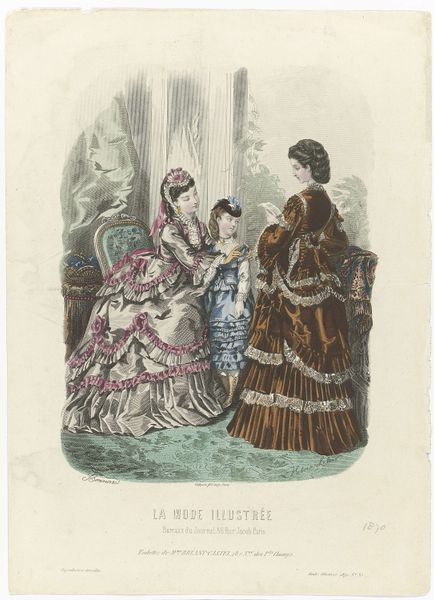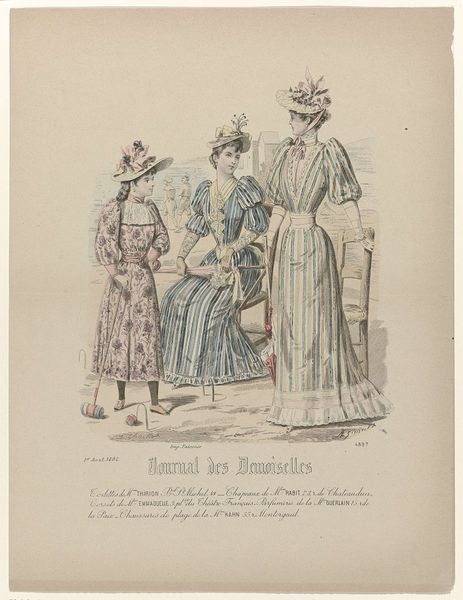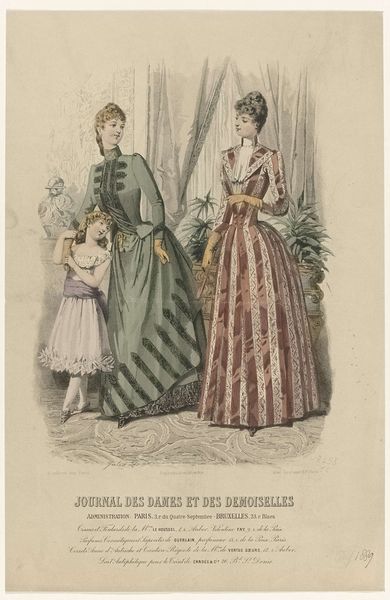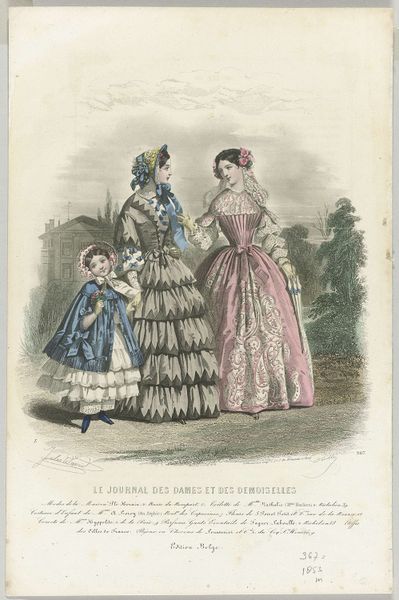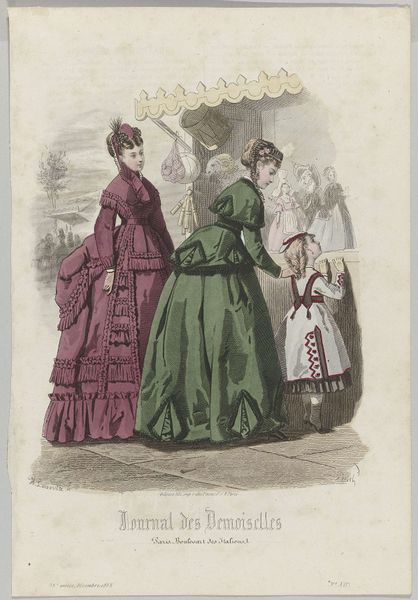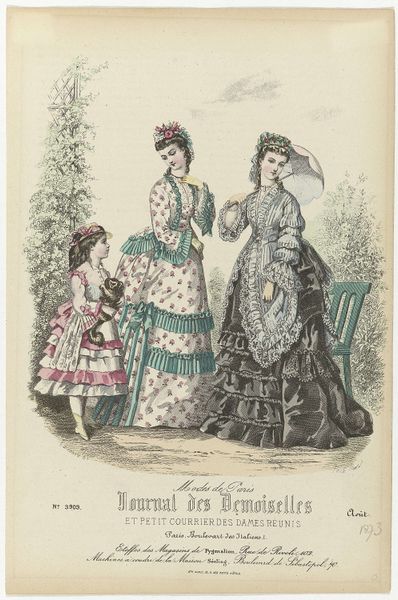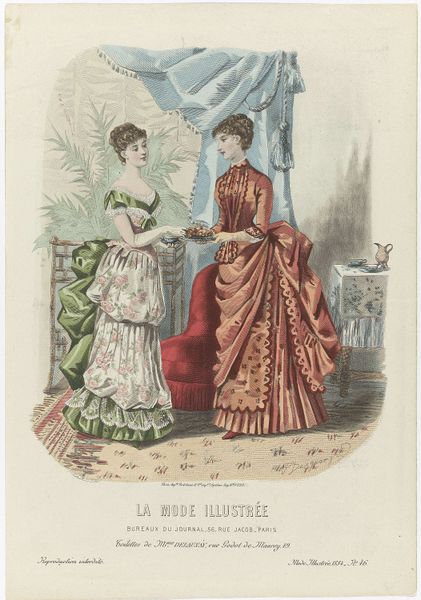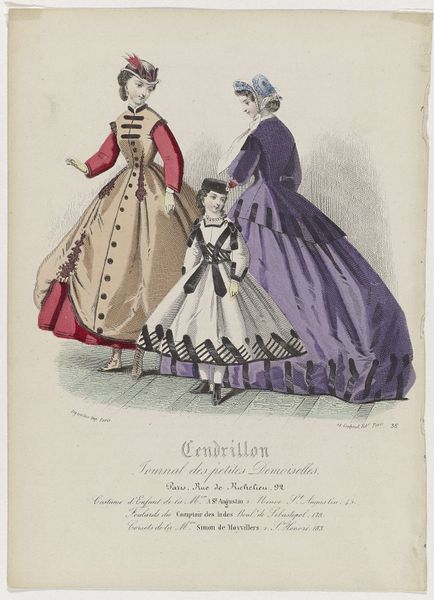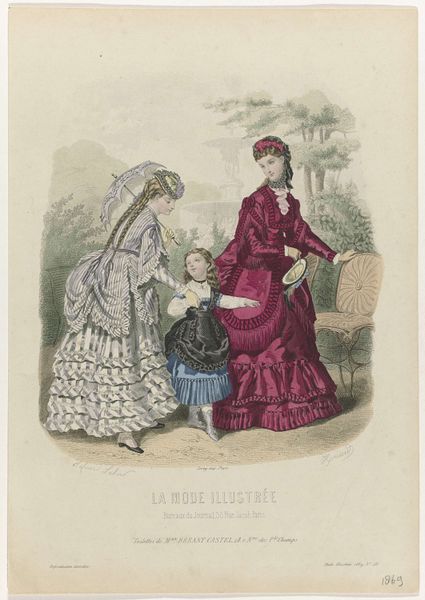
Dimensions: height 201 mm, width 141 mm
Copyright: Rijks Museum: Open Domain
Curator: I see figures poised like delicate porcelain dolls, stiffened by their garments. Editor: Well, this charming print, titled "Cendrillon, 1866, No. 28: Journal des petites Demoiselles...", offers us a glimpse into 19th-century French fashion. Executed around 1866, this watercolor print reflects a distinct Romantic sensibility. Curator: Romantic, really? The way the girl's eyes are so… vacant. Editor: It's true, there is an interesting tension there, isn't there? While the dresses suggest a light, fairy-tale world – literally so, given the Cinderella title – there's a formality and rigidness to their postures. Think of Romanticism less as 'hearts and flowers' and more as an embrace of emotion, imagination, and a certain theatricality, and you'll begin to feel what I mean. Fashion plates like these shaped ideals and aspirations for women, constructing them as refined and decorative. Curator: Constructing might be the key word here. They’re beautiful, in a gilded-cage sort of way. The dresses feel like elaborate stage costumes rather than practical garments. They're beautiful surfaces, these clothes, meant to project an image of… impeccable taste and social standing, maybe? There’s so little allowance for individuality in those outfits! Editor: Precisely. The rise of mass media and fashion publications significantly impacted how women perceived themselves and their role in society. Prints such as these were instruments in shaping consumer desires and class consciousness, reflecting, and simultaneously dictating, social norms. I would suggest even aesthetic oppression. Curator: Now that I consider it that way, these "petite Demoiselles" might not feel that petite or be too happy in those elaborated dresses, no? Perhaps it is the observer which wants to confine them in those gilded cages, as I mentioned before. It does, somehow, twist the knife of melancholy of our past in such peculiar ways. Editor: I agree, looking closer at these pieces provides unique and unexpected insights that enable you to question fashion and the models for young ladies that came from it. It makes history that much richer.
Comments
No comments
Be the first to comment and join the conversation on the ultimate creative platform.

